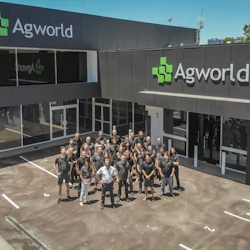With a range of extreme-weather events currently playing out across the globe, from floods on the east coast of the U.S. to an extreme drought in most of Australia, growers as well as other industry stakeholders are increasingly trying to get information ahead of these sorts of events that can help them mitigate the risks.
If you can accurately measure how much rain you are going to receive in a flooding event before it actually happens, for example, you can then move your stock out of the danger zone and make other informed decisions that can help you limit the damage. On other side of the coin, if you know that you are about to be in a drought situation and you have a good idea of how long this drought will last, you can then make calculated decisions regarding how much stock you want to sell or keep and what the best way forward is with your crops. Seems far-fetched, right? Not something that is possible? Well, increasingly, scientists seem to think differently.
The European Space Agency (ESA) launched its Aeolus satellite on August 22 of this year with full operational capacity to be expected around April 2019. Aeolus’s mission is to acquire profiles of Earth’s wind on a global scale, which in turn is expected to help improve numerical weather prediction models and therefore forecasts. Interactions between wind, temperature, and humidity play a key role in determining atmospheric dynamics. Aeolus will help scientists understand these interactions better, which in turn is expected to lead to higher quality forecasts. ESA is expecting this to particularly improve the estimation of the position and intensity of tropical cyclones and hurricanes, as well as generic medium-range forecasts thanks to having a better definition of the planetary-scale waves and a more uniform coverage of the earth available.

Got what it takes to join the Agworld team? We’re looking for talented individuals to help us deliver innovative solutions in agriculture.
In Argentina, the country’s National Space Activities Commission (CONAE) has just announced it is launching its SAOCOM 1a satellite on October 6 this year from Vandenberg Air Force Base in California. SAOCOM 1a’s radar antennae technology is designed to measure soil moisture, which will allow CONAE to access a real-time “water map,” not just on the surface but also up to 2 meters below. They aim to use this data to predict crop yields, as well as floods and droughts, up to months ahead. The X-ray and microwave technology built into SAOCOM 1a means that it can produce images regardless of atmospheric conditions such as clouds.
The two satellites mentioned above are only two examples of a much larger list of satellites launched in recent years that have the potential to help farmers around the globe mitigate their risks and capitalize on opportunities. ESA’s Sentinel Program and Planet’s Dove constellation, mainly focused on crop monitoring through multi-spectral imaging, and Myriota’s low orbit satellites, focused on communication with in-field devices, are just a few examples of the exciting developments that are already underway.
Satellites have long proven to provide a more scalable and cost-effective solution to drones or airplanes and quality from both sources (space and air) is slowly getting similar as well. With satellite projects such as SAOCOM now moving into the territory of soil moisture measurement, many agronomists will also be counting down the days until they don’t have to manually install soil moisture probes anymore and having intra-field variable moisture data available whenever they need it. The only question that remains now is how are we going to use all of this data in a multilayered approach that will help growers make more accurate financial and agronomic plans and be proactive in managing their risks?





